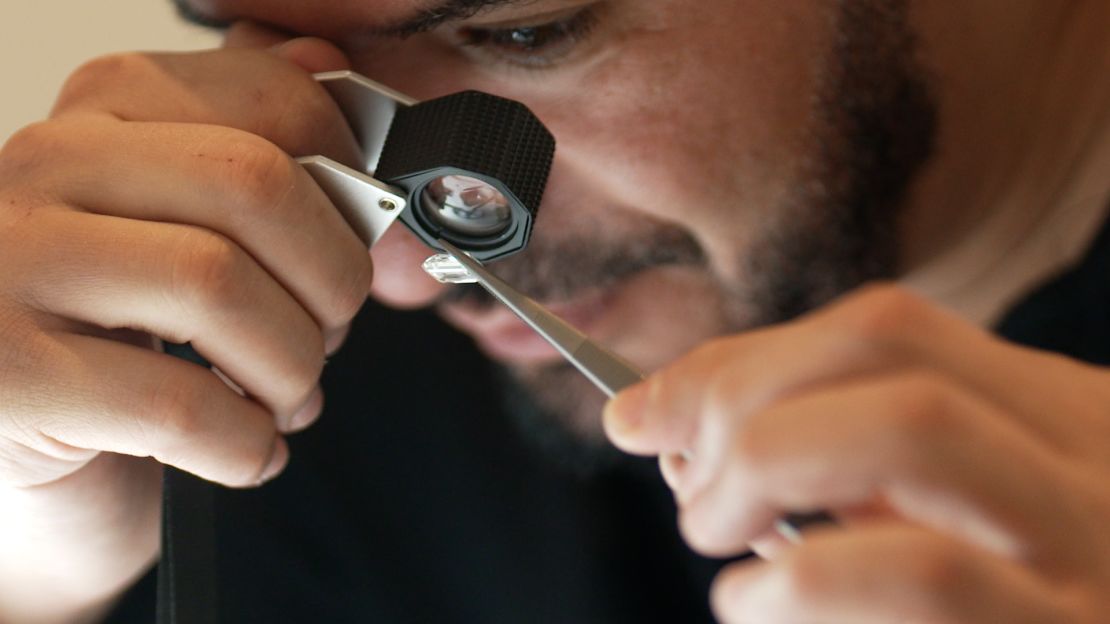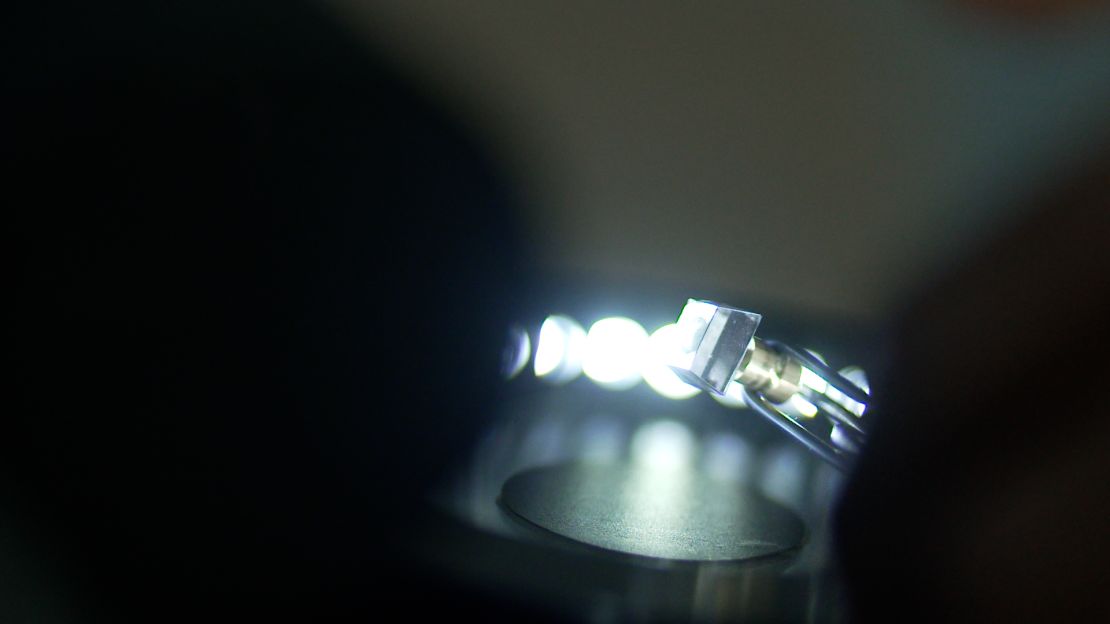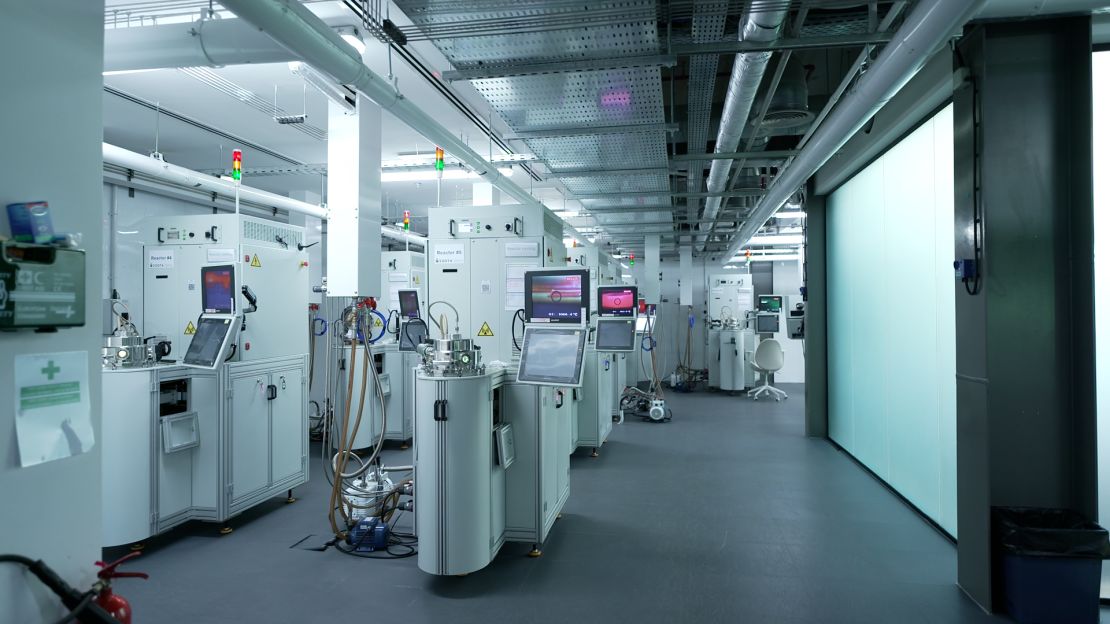Editor’s Note: This series is, or was, sponsored by the country it highlights. CNN retains full editorial control over subject matter, reporting and frequency of the articles and videos within the sponsorship, in compliance with?our policy.
Diamonds are the hardest material on Earth — and finding one in nature is comparably tough.
For thousands of years, humans have dug deep into the Earth in search of diamonds, creating some of the world’s largest manmade pits in Russia and South Africa that descend as much as 625 meters (2,050 feet) below the ground.
The intensive process has an impact on both nature and people, with dangerous working conditions and practices that damage ecosystems.
But mining isn’t the only way to source diamonds. The first lab-grown diamond (LGD) was produced in the 1950s, according to the International Gem Society, and the technology has continued to develop, enabling labs to grow gem-quality crystals at affordable prices — up to 80% cheaper — without the sustainability and ethical concerns of mining.
And growing diamonds artificially means you can bring diamond production to the most unexpected places — including the desert.
The United Arab Emirates (UAE) is a global leader in diamond imports and exports, but it does not have any diamond mines. So entrepreneur Mohamed Sabeg saw an opportunity to not just trade diamonds, but grow them.
In 2022, he co-founded Dubai-based 2DOT4 Diamonds, becoming the first to produce, cut, and polish lab-grown diamonds in the UAE.
“Our idea was to bring the mine to the consumer,” says Sabeg. “Instead of having diamonds flying all around the world, the diamond is produced and sold locally.”

Diamonds in the making
The company’s name, 2DOT4, comes from the refractive index of a diamond —the speed at which light passes through a diamond compared to air, which is approximately 2.4 times slower.
For Sabeg, having a name that relates to a physical property of the gem is a representation that the pieces produced in a lab are identical to the ones in nature.
“The only difference is that we control the pressure, we control the heat, we control the gases,” he says. “The mined diamond, you don’t control it, the Earth is doing it.”
To grow a diamond, you start with a diamond, either lab-grown or mined, explains Sabeg. It’s called a “seed” and is usually around 0.3 to 0.6 millimeters thick. (2DOT4 makes its own seeds from the diamonds grown in-house.) ?
Placed inside a reactor, the seed is exposed to gases such as hydrogen, methane, oxygen, and argon. It also undergoes a pressure of up to 180 torrs —around two-thirds of the pressure at the peak of Mount Everest — and reaches temperatures of 1,000 degrees Celsius (1,832 degrees Fahrenheit). In this way, carbon is slowly deposited onto the thin slice.
Then, it’s a matter of time for it to grow in volume.

“You decide the speed of growth by using different parameters: the lower your speed is, the better your quality will be,” explains Sabeg.
On average, 2DOT4 grows its diamonds at a speed of around 0.01 millimeters per hour. This means that every 24 hours, the stone grows in length comparable to the thickness of two sheets of paper.
Once the diamond has grown to at least five millimeters in height, the piece is called a “block,” and there are three possible outcomes. It can be sliced into more seeds, that will be fed back into the reactors to grow more diamonds. Or, based on demand, 2DOT4 will cut and polish the gem. It can then either be sold to jewelers and designers, or turned into a jewelry piece designed in-house.
A global gem
Currently, the US, China, and India dominate LGD production, with the latter two accounting for over two-thirds of global output, according to Paul Zimnisky, a diamond industry analyst and consultant based in the US.
Besides jewelry, lab-grown diamonds are used in multiple industries, particularly when it comes to making tools that cut through dense materials such as concrete, marble, and metals.
For example, China has “a multi-decade legacy of producing synthetic diamond for abrasive industrial?application, so they have the know-how and the infrastructure to be a major producer of man-made diamond for jewelry as well,” explains Zimnisky.

India, on the other hand, has been a long-standing leader in diamond cutting and polishing, and embraced LGD technology to jump into production, too. Last year, the country underwent a tax reform in the sector and pledged extra funding to further expand its man-made diamond industry.
Given the UAE’s status as a top diamond trading hub and its diversification efforts away from oil, expanding into the lab-grown diamonds industry could be an important move for its economy, says Ahmed Bin Sulayem, CEO and executive chairman of the? Dubai Multi Commodities Center (DMCC), a global trade hub that held the very first Lab-Grown Diamond Symposium.
“With the rise of the LGD industry symbolizing the intersection of technology and trade, the potential it holds is monumental, [and] we are excited to see Dubai positioned as a pioneering force in this transformative era,” says Bin Sulayem.
“Sixty years ago, if you tell someone this is a synthetic or a lab-grown diamond, they won’t even look at it,” he adds. But younger generations are more concerned about ethical and environmental issues associated with mining, and are drawn towards the affordability of luxury goods, “so the industry has to adapt,” he adds.
Entering the LGD production space could be a challenge, though. According to Zimnisky, competing with India and China will be difficult at scale, “unless you have a competitive advantage, or have a niche?or specialized business.”

Sparkling future
Other UAE companies are following 2DOT4 and setting up their LGD business in Dubai, including Eviqe Diamonds, a part of HRA Group, which set up its production facility in the Emirate just a few months ago. Meanwhile, local brands such as Etika and Eayni are marketing their designs using lab-grown gems only.
For the DMCC, the goal is to encourage the entire production to be done in-house, as a way of adding value to the final product and strengthening the local industry.
“The key message we are giving to the lab-grown diamond industry is, don’t waste your time on selling the diamonds: focus on the final art,” says Bin Sulayem.
For Sabeg, the hope is that 2DOT4’s creations are laying the foundation for the future of LGD production in a country that currently imports more diamonds than anywhere else in the world.
“Our way of looking at what we are doing is to set a standard in the industry,” he says.
